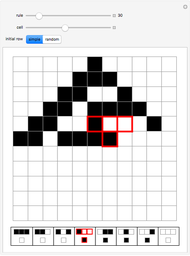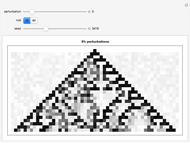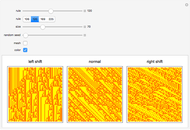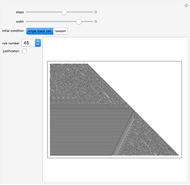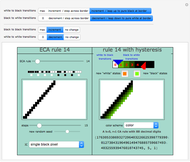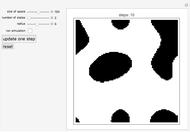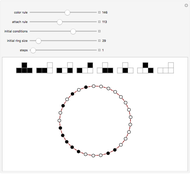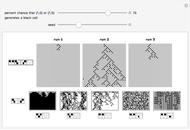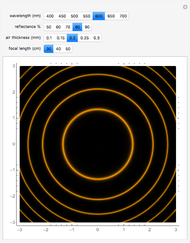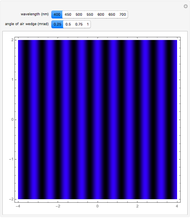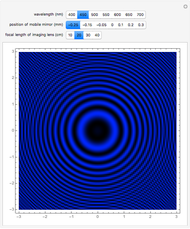Claviatures for Generalized Cellular Automata

Requires a Wolfram Notebook System
Interact on desktop, mobile and cloud with the free Wolfram Player or other Wolfram Language products.
This Demonstration shows the feasibility of "generalized cellular automata" as subrule and morphogrammatically based constructs.
[more]
Contributed by: Rudolf Kaehr (March 2016)
Open content licensed under CC BY-NC-SA
Snapshots
Details
Why claviatures?
It is well known that complex CAs are defined by a number of rules that are not easily accessible. It is common to list and enumerate the rules of simple CAs, like 1D ECA, which can be easily enumerated and listed. It is also possible to use a subrule approach for ECAs; there is no necessity for it.
Morphogrammatically based CAs are introduced by an abstraction from set-defined CAs to Stirling number-defined CAs. Despite the Stirling abstraction, the number of rules is still much too big to be handled effectively by lists. Therefore, the claviature approach had been introduced.
How are claviatures to be understood and used?
Claviatures of CA systems are used like the keyboard of a piano. (The keyboard of a piano is known as a claviature.) Pressing certain keys can cause an effect. The possible melodies (i.e. constellations of pressed keys) are not predetermined by a list of millions of possibilities.
The keys of the claviature of the automaton represent subrules of a possible CA. With the help of the keyboard, the constellations of the subrules are accessible by the keys and are actually produced by choice.
How many keys define a claviature?
There are  keys for a chosen
keys for a chosen  , where
, where  is the
is the  Bell number; here
Bell number; here  . In the example, the last key with the supposed values [1,2,3,4,5] is omitted for practical reasons. Thus, there are just 51 keys on the board.
. In the example, the last key with the supposed values [1,2,3,4,5] is omitted for practical reasons. Thus, there are just 51 keys on the board.
In contrast to a piano keyboard, the keys of the CA claviature are grouped into categories, here from "a" to "o".
The keys in each category are disjunctively separated—say for category "m", the keys are [2321], [2322], [2323], and [2320].
The notation of the keys is for practical reasons abbreviated by elimination of the first value 1 of the rules represented by the keys.
Just one key of a category might be pressed to define a constellation, but from all categories one single key has to be pressed.
The complexity of possible CAs is thus calculated by the combination of the keys. Hence for the example, the possible CA realizations are counted by:  . Here, because of the exclusion of [1,2,3,4,5], there are just
. Here, because of the exclusion of [1,2,3,4,5], there are just  different possible CA realizations.
different possible CA realizations.
Interactive definition of the complex CAs
Because of the essential interactivity of complex morphogram-based CAs, the form of their organization is not structured by algebras but by streams of co-algebras.
A natural disadvantage of the claviature approach is given by the simple fact that there is no practical possibility to get an overview of all rules of complex CA systems. An overview is possible for very simple systems with values 2 or 3. But this desire is, in fact, an illusion in the context of complex CA systems, even for small numbers.
References
[1] R. Kaehr, "Claviatures for Morphic and Indicational Sound and Graphic CAs." (Mar 16, 2016) www.thinkartlab.com/Memristics/Morphic Cellular Automata/Klaviaturen-5.5/klaviaturen.html.
[2] P. P. B. de Oliveira and M. Verardo, "Representing Families of Cellular Automata Rules," The Mathematica Journal, 16, 2014.
Permanent Citation








